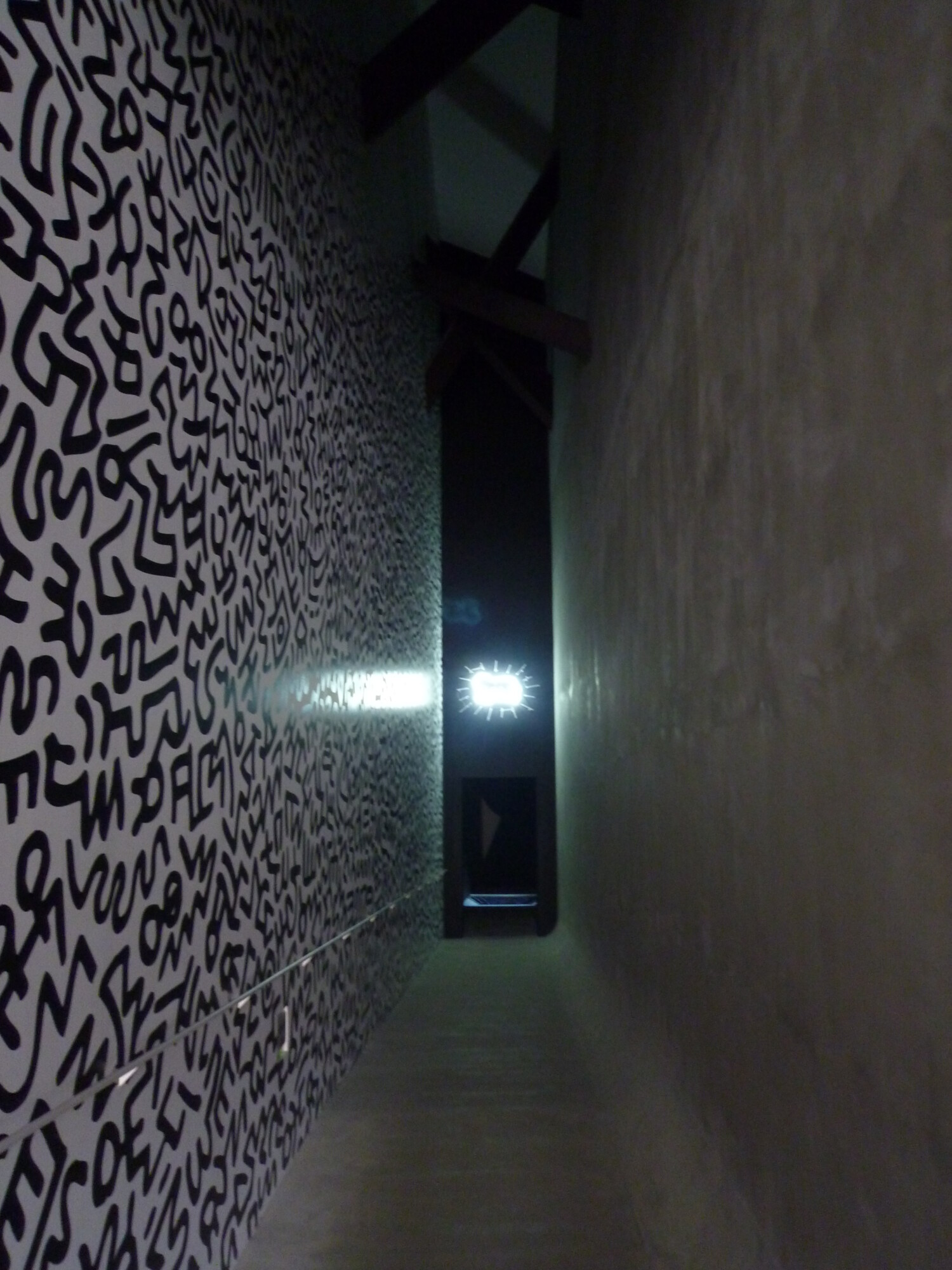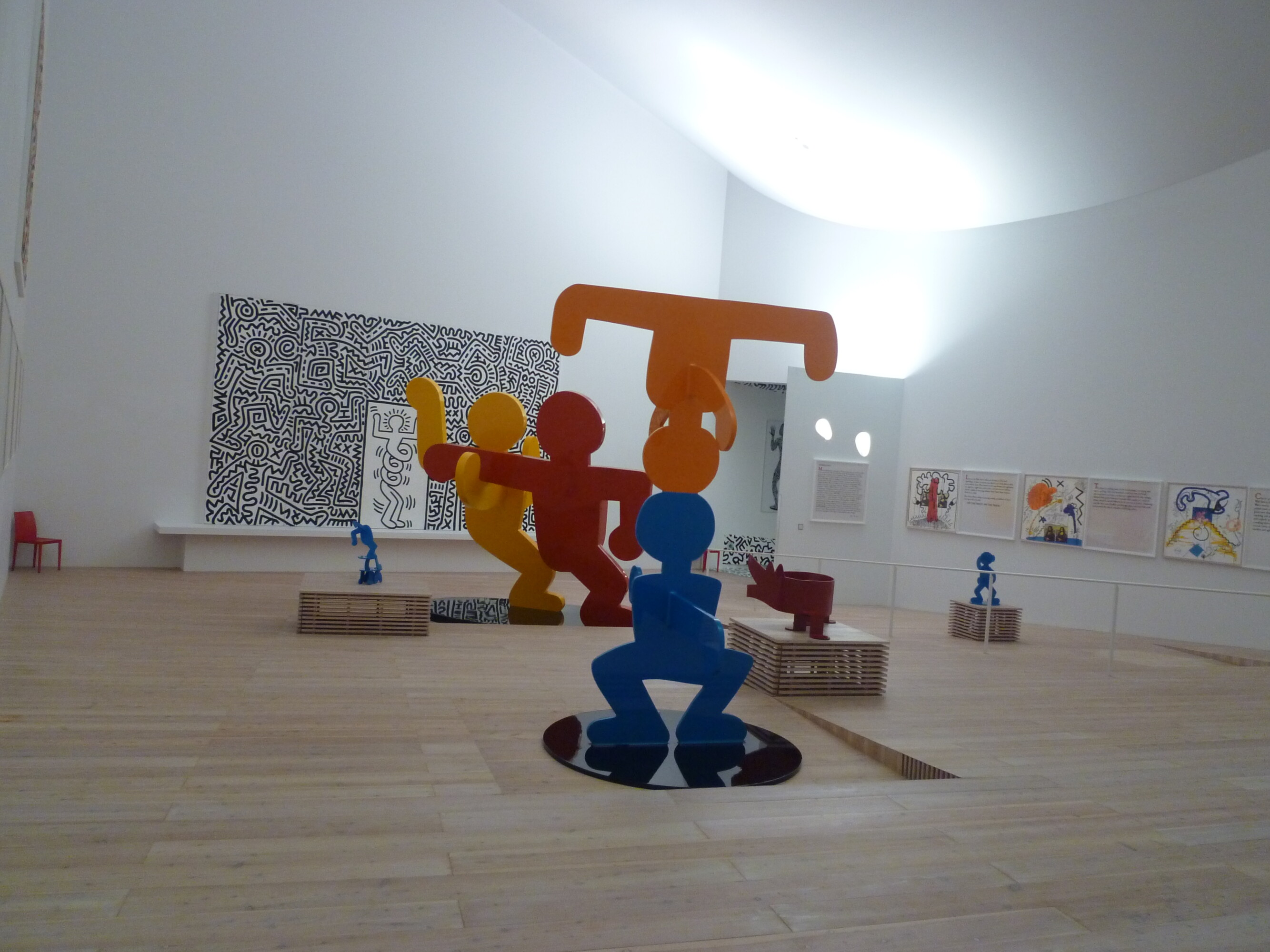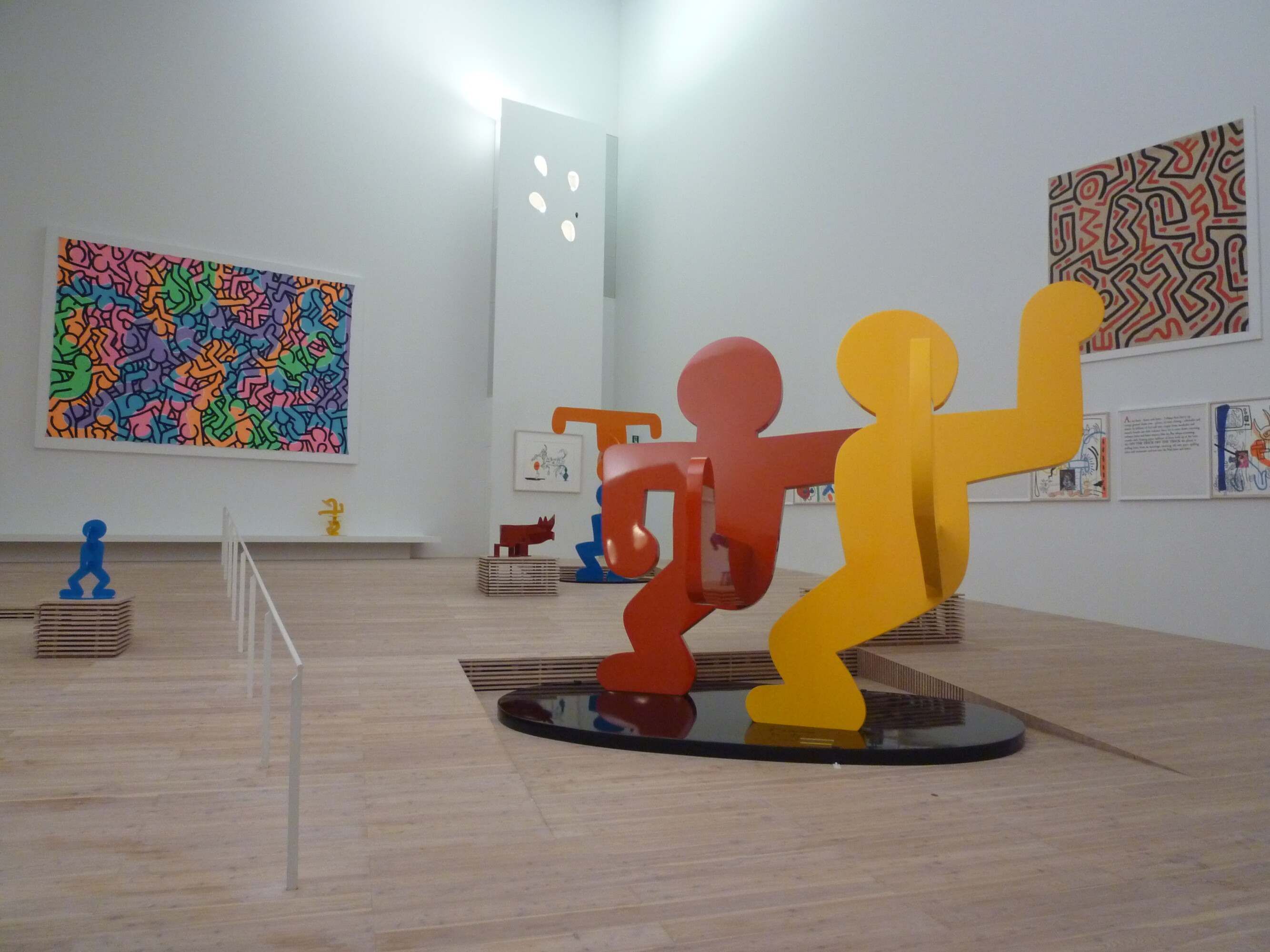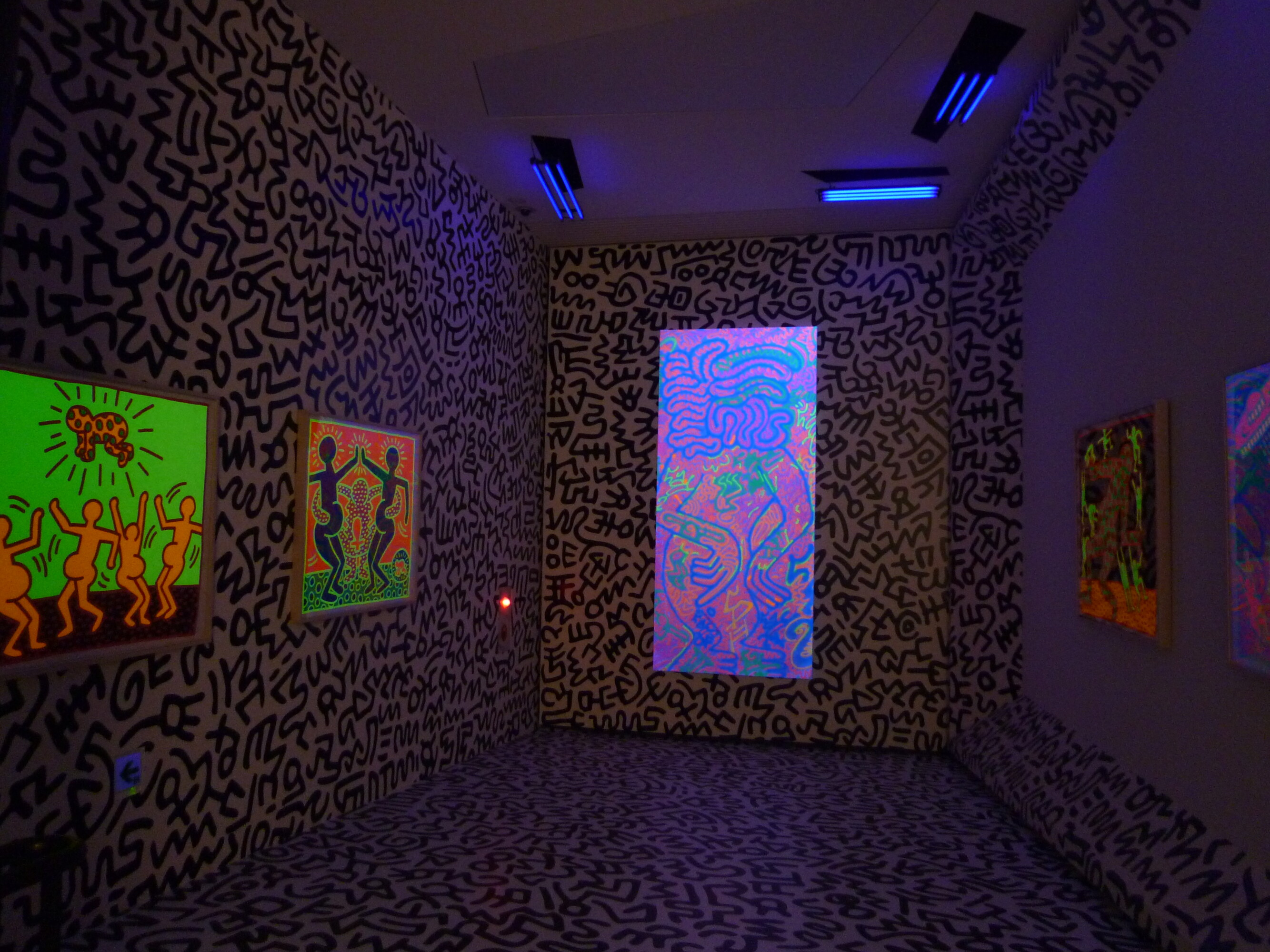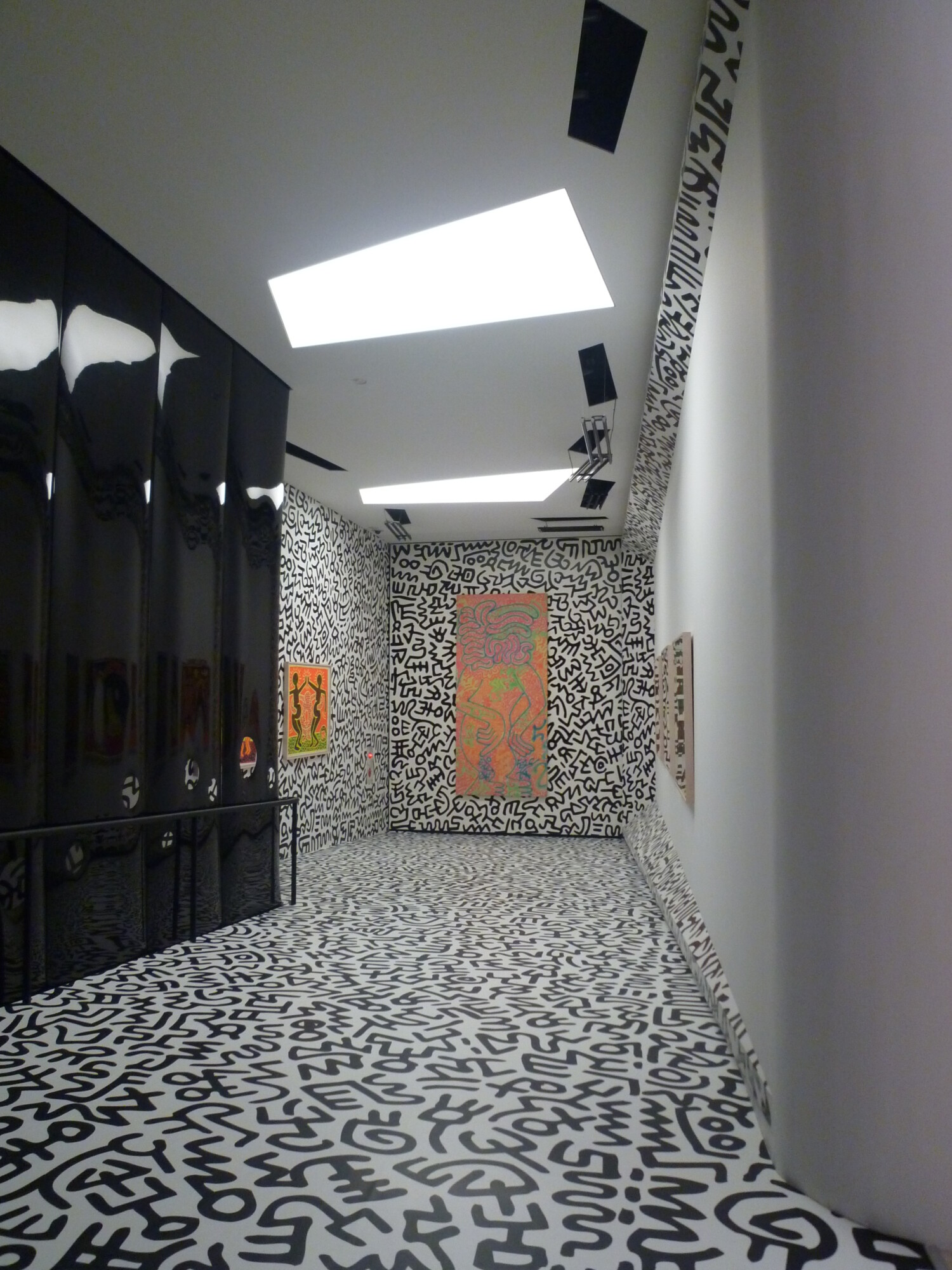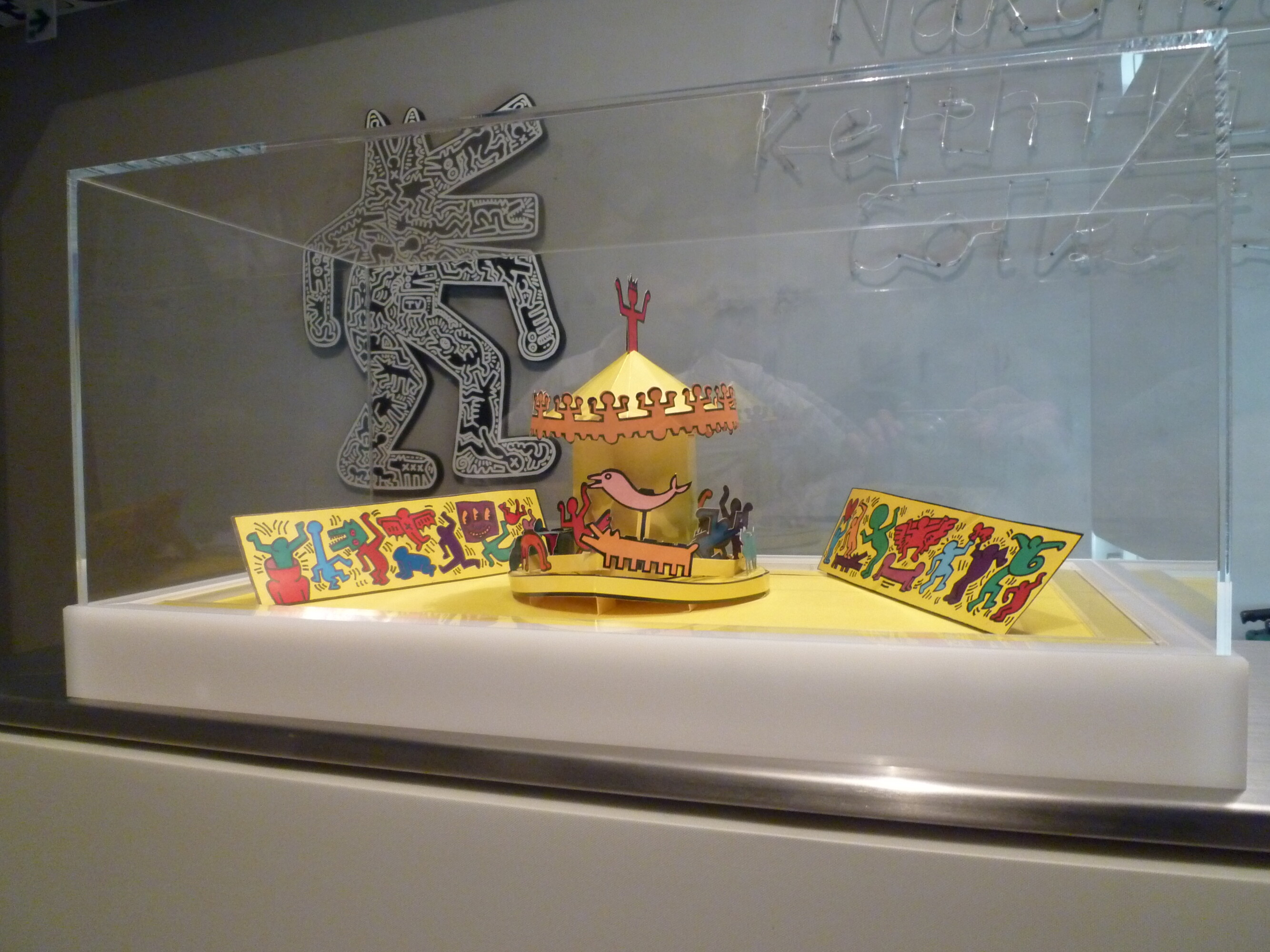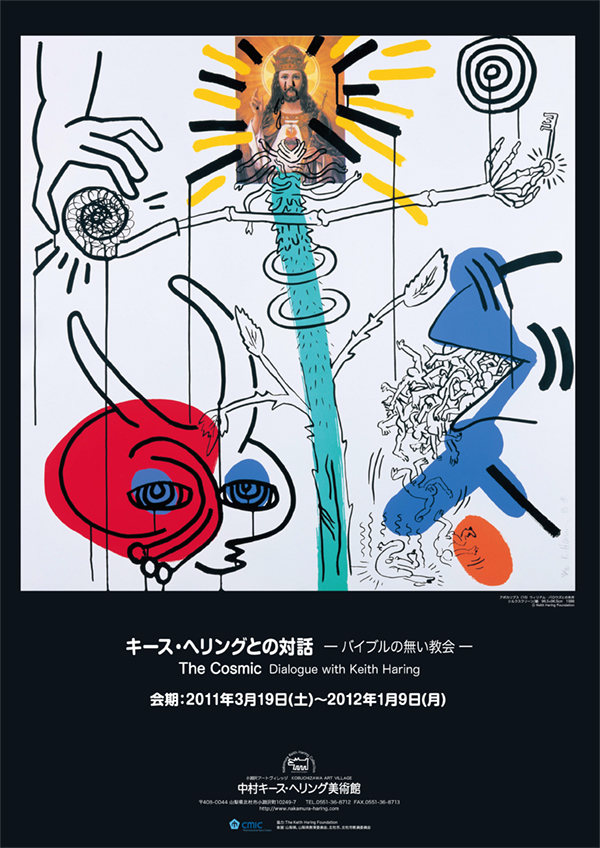
Dialogue with Keith Haring: A Church Without a Bible
In Cooperation with: Keith Haring Foundation
In today’s society, where accessing the latest information is paramount, means of communication have become increasingly direct, enabling us to connect with countless people across time and space. The distance between individuals and the world has seemingly shrunk to an extraordinary degree. Yet, can technology truly bridge the distance between people?
To explore this question, the Nakamura Keith Haring Collection presents the 2011 exhibition Dialogue with Keith Haring: A Church Without a Bible. During the 1980s, when Haring was actively creating art, computers were not yet widely available. Nevertheless, he posed the critical question: “The major question is, though, are we going to be able to control the evolution of the computerized mind, or can it evolve and grow by itself?” For Haring, the answer lay in dialogue, an approach reflected throughout his work. His iconic Subway Drawings, created in the public spaces of New York City, are an early example of this effort to establish dialogue through art.
The exhibition presents three distinct spaces in the museum as passages through life: The Room for Reflection, The Space of Stirring Life, and The Room for Hope.
In The Room for Reflection, visitors are led into a silent, darkened space, devoid of boundaries, evoking a sense of being engulfed by infinite blackness. This is a place to confront the contradictions of society, the anxieties of daily life, and one’s own inner struggles. Haring’s Subway Drawings and Blueprint works convey direct messages, creating a dialogue with the viewer. By sitting in the centrally placed chair and closing their eyes, visitors may feel liberated, rediscovering something long forgotten in the routine of daily life.
The Space of Stirring Life represents a dimension of anticipation and hope for the future. Amid the chaos and illusions of modern society, visitors will encounter works like The Annunciation and the newly acquired Day-Glo Painting, which resonate with the emergence of new life and the echoes of its heartbeat, heralding a certain tomorrow.Finally, The Room for Hope is a space bathed in dawn’s light, symbolizing liberation from darkness. Here, works like Apocalypse reveal the distortions of human society and the inherent struggles and chaos within the human heart. Yet, as all life must end, so too do all things reach a conclusion—transforming endings into gateways to new beginnings and passing hope onto future generations. It is our hope that visitors will open their hearts to the universality of these truths.
Special Exhibition
Throughout the year, thanks to the cooperation of the Keith Haring Foundation, approximately 40 original posters by Keith Haring, created as part of his lifelong commitment to social activism, will be on display.
INSTALLATION VIEW
RELATED EVENTS
緑音 vol.4 Live modern bonsai
We have prepared a recording microphone to give everyone the opportunity to freely express their thoughts, including things you might usually want to say but feel unable to. Why not take a moment in the natural surroundings of Kobuchizawa to open your heart and listen to your own voice?
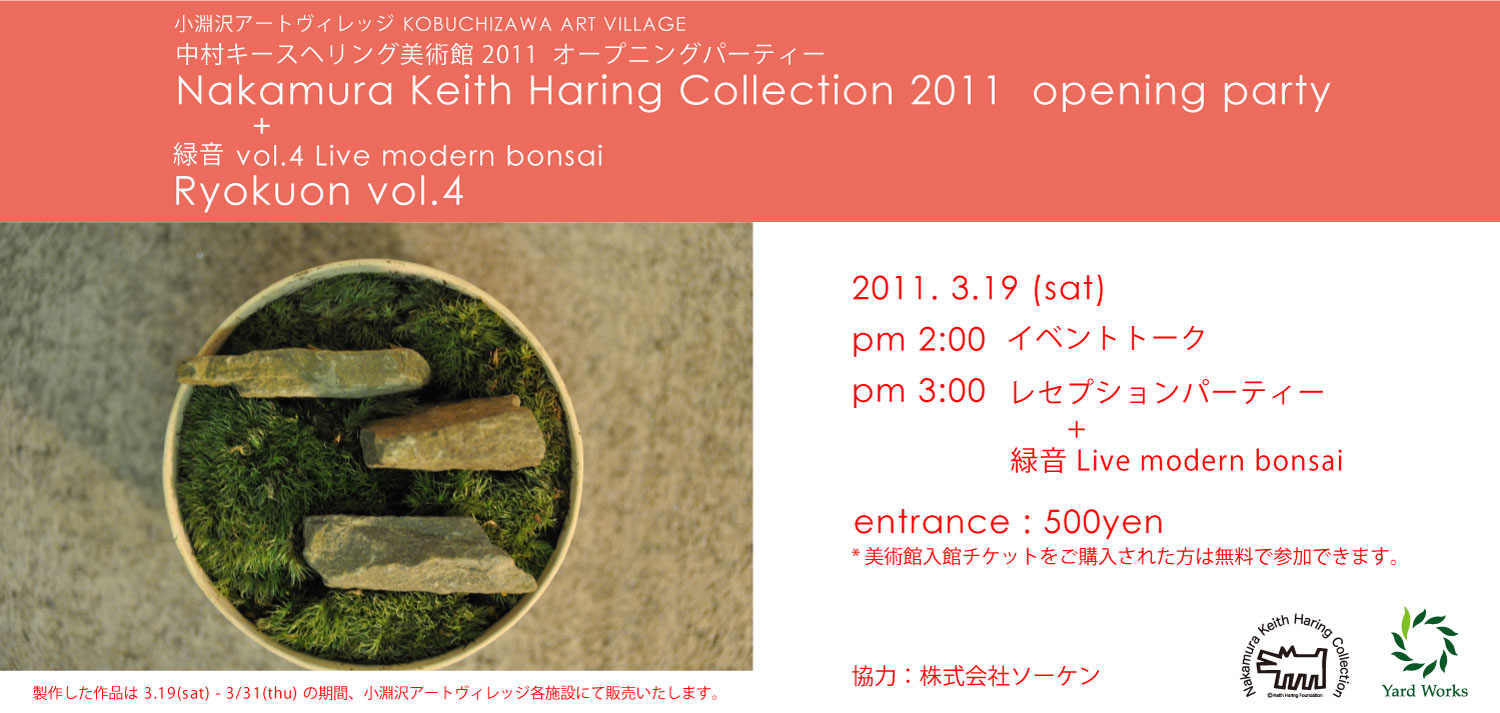
performer
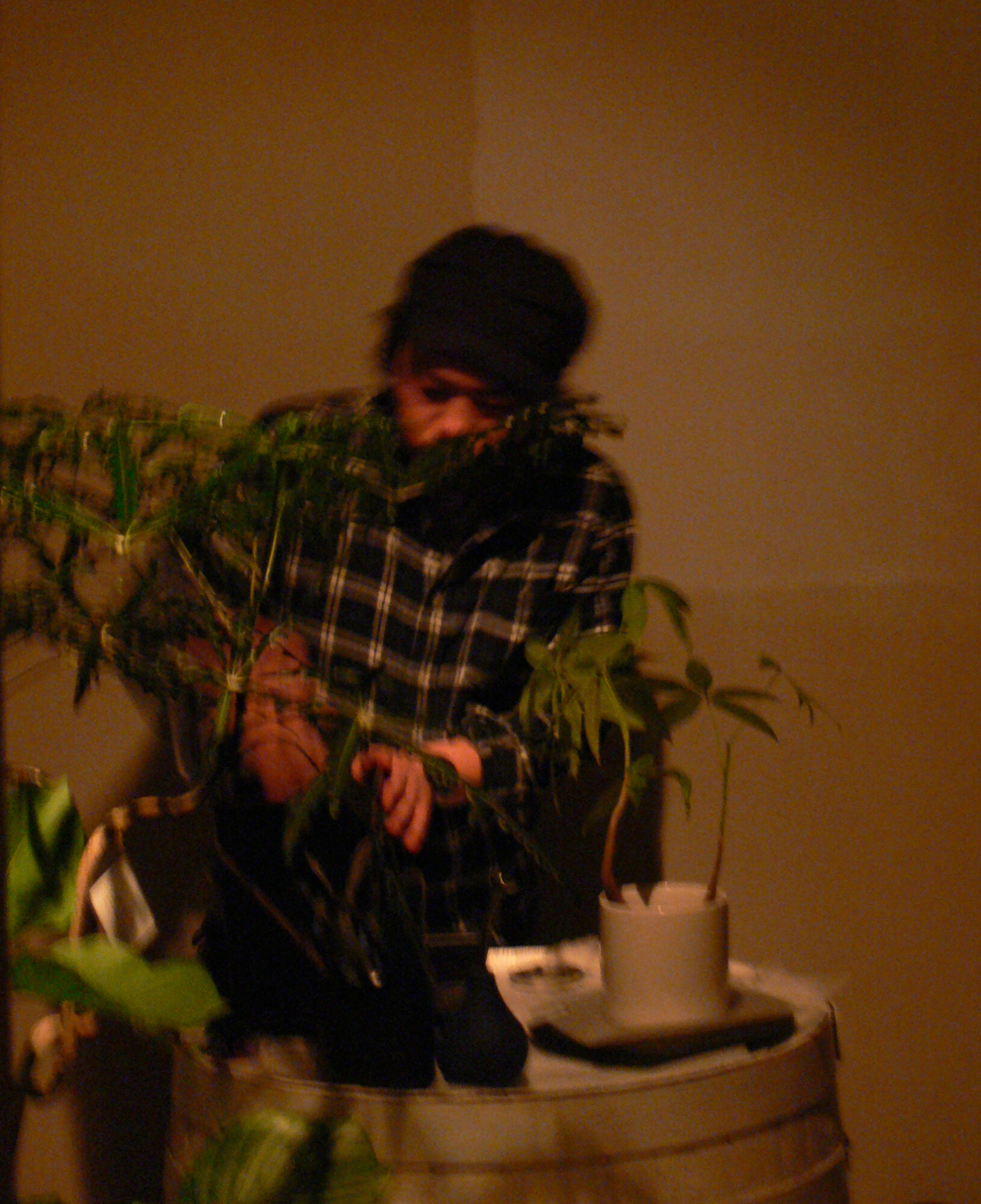
Kei Amano
In 2007, Kei Amano embarked on a journey through Europe, exploring landscapes and parks. After returning to Japan, he became independent and, in April 2008, established an office with an exhibition-style setup inside the Furniture Plaza Kishiishi store in Ryuo. Outside the space, he created ZEN-NIWA, a piece from Yard Works.
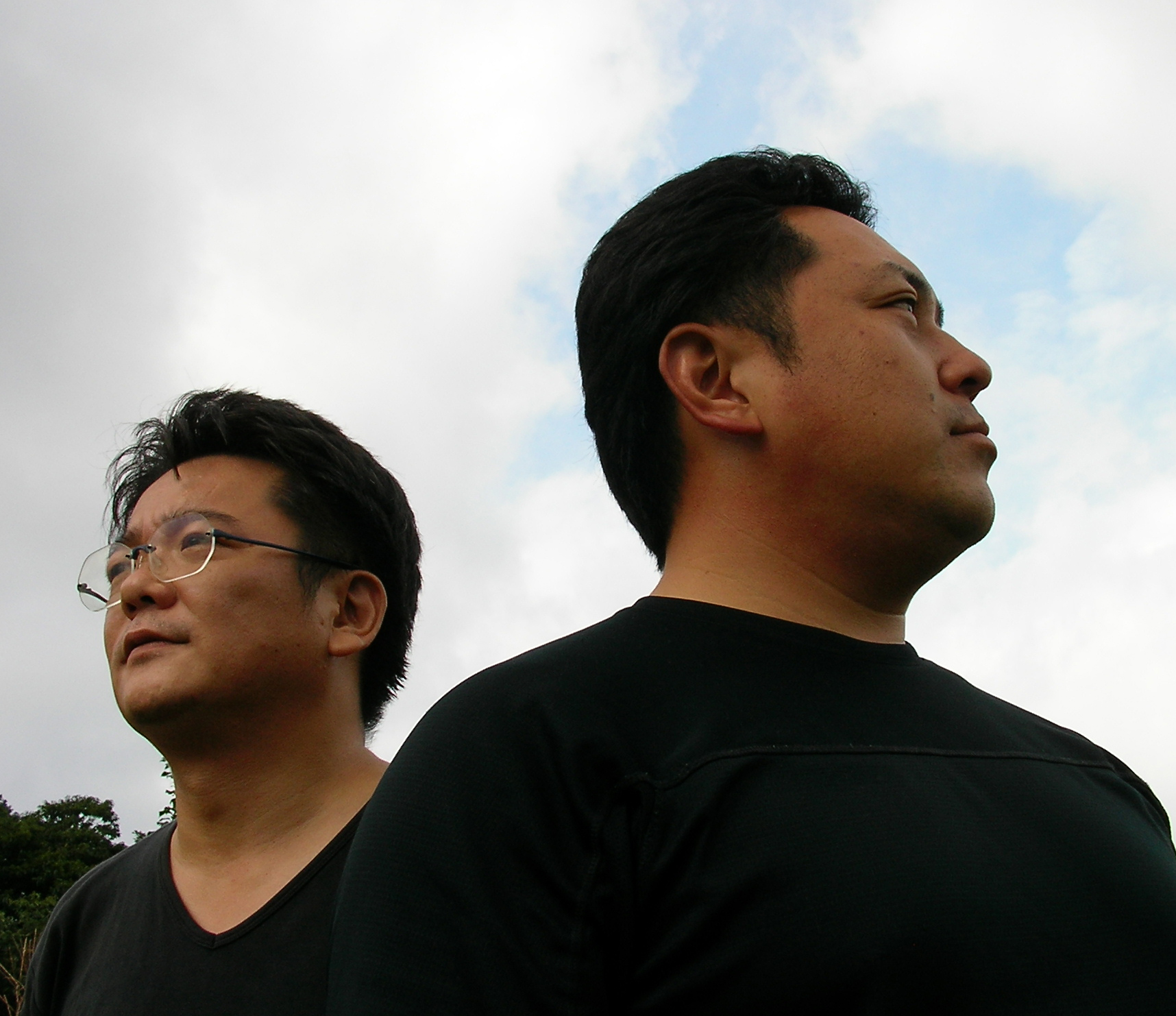
SAUZA/GIN, YOSHIHARA
In 2008, under the name SAUZA, they began music production alongside the completion of the ZEUSFACTORY studio. All their tracks are original, constructing a virtual world envisioned by the two members and projecting it onto the dance floor as a sound vision.
During live performances, they output directly from a digital multitrack and mix in real-time, delivering an immersive auditory experience.


